- HubPages»
- Health»
- Exercise & Fitness»
- Weight Training
The Best Dumbbell-Only Chest Workout Routine
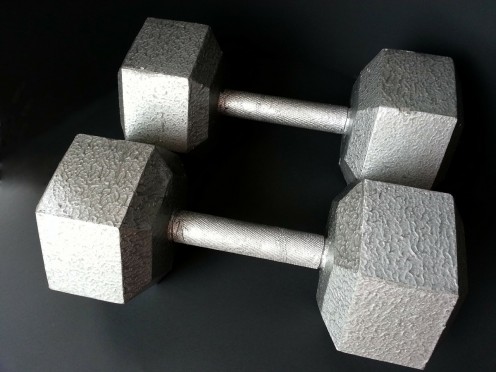
Dumbbells offer a unique training environment for the body. The most notable difference between dumbbells and a barbell is that the former enables you to move the weight in an untracked, variable path – which recruits more muscle fiber.
Though the barbell allows more weight to be moved when compared to the same exercise with dumbbells, the variability in the movement path is a benefit of dumbbell workouts that can’t be ignored.
Flat Bench Dumbbell Press
This has unique benefits that the barbell bench press cannot offer. In a barbell press, the hand position remains fixed (other than width). As a result, the muscles track through the air at the exact angle every time, for a given hand width on the bar.
When dumbbells are used, the tracking varies at every point along the lift, because the arms can rotate while pressing the weights up and down. In fact, they rotate in imperceptible ways just to keep the weights balanced, and the trainee may not even be aware of these tiny neuromuscular movements for adjustment.
It’s similar to the continuous though tiny adjustments that one makes to the steering wheel while driving to prevent the car from veering off the road, even though the adjustments occur subconsciously.
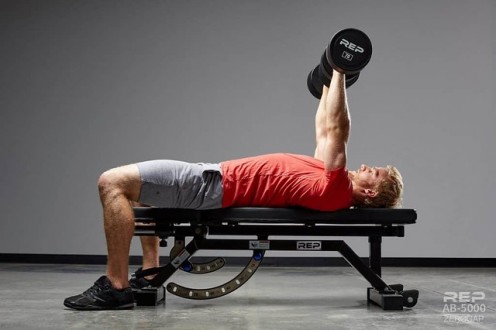
During a dumbbell press, more muscles get worked. However, a common school of thought is that the bench press, because of the fixed nature of the hand position, is the better exercise for building muscle and strength.
This may be true for some individuals, but for others, using a bar is uncomfortable, and dumbbells have a more ergonomic or comfortable feel.
If an exercise feels more comfortable than another, a person will be able to make better gains with it. Furthermore, dumbbells allow different patterns of neuromuscular recruitment because the palms can be facing different ways.
For the dumbbell chest press, palms can be facing each other the entire time; they can be facing forward the entire time; or, they can start the lift facing forward, but as the weights are pressed up, the palms rotate towards each other.
The drawback to dumbbell chest presses is that if the weights are big enough and heavy enough, one may find it challenging to enter and exit the set. There is a viable solution to this.
Carry the dumbbells to the bench and have a seat, dumbbell-ends on thighs. Then one leans back, kicking thighs up to help support the weights as one lies on the bench. The trainee is now ready to start pressing.
At the conclusion of the set, one can bring the legs up to meet the ends of the dumbbells, then sit up with the dumbbells maintaining contact with the thighs.
The other common way of exiting is to let the weights fall to the floor. This second approach is not recommended because of the potential for carelessly dropping the weights, and they can end up rolling into someone’s way.
Plus, lowering the shoulders and upper arms to drop very heavy weights does have the slight potential to strain a tendon in the shoulders.
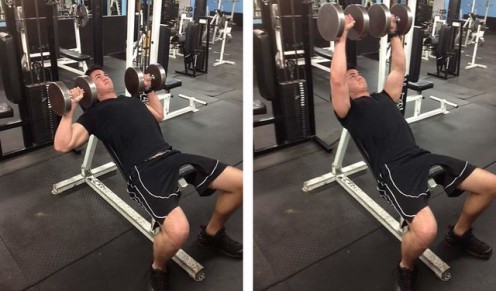
Incline Dumbbell Press
The incline can vary. Incline benches are adjustable to an almost flat position to an almost upright position.
Anything more than around a 45 degree incline will recruit enough shoulder muscle fibers that the exercise then becomes less of a chest exercise. Thus, one should keep the incline under 40 degrees.
The variations in hand positions that can be done with flat bench workouts can also be applied to the incline bench.
Dumbbell Pushup Row
Also known as renegade rows, this involves performing pushups with hands on dumbbells, and after every pushup, rowing a dumbbell up to one’s side for one rep.
The common version of this is to do one pushup for every row done with both arms consecutively. For more taxing of the chest muscles, one should do the pushup after every single row. To add intensity to the chest portion of this super compound exercise, one simply holds the down position of the pushup for a full second.
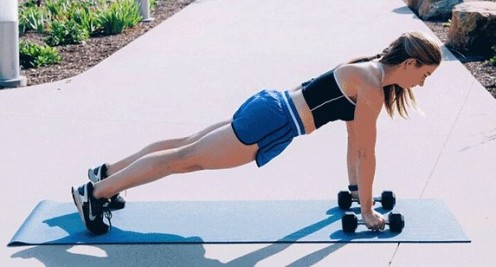
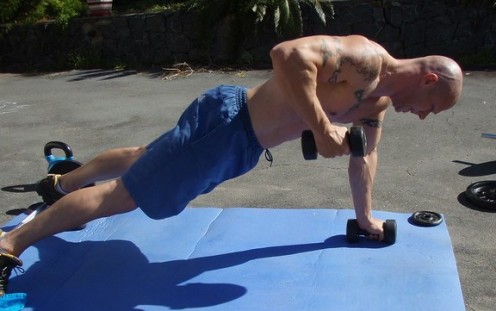
Typically, when people do renegade rows, they use light weights. It’s quite uncommon to witness a person doing renegades with dumbbells exceeding 35 pounds. A heavier dumbbell will tax the rowing muscles before the pushing muscles get taxed.
It would be great if one could use a weight that creates the perfect balance: The back and biceps muscles fatigue at the same rate as do the chest and triceps muscles. However, this likely will not happen.
One good formula is to figure out the weight that will induce failure for the entire movement within 8-12 repetitions, but then after that point, the trainee can continue doing just pushups, off the dumbbells—to a second failure. This routine, when performed this way with the right amount of weight, will leave a person breathing hard and feeling beat.
Flyes
Flyes can be done on a flat bench, slight incline or even the floor, though as far as chest muscle recruitment, they are best done on a flat or almost flat bench. Flyes can be done with arms completely outstretched or only partially outstretched.
One begins by holding dumbbells straight above, palms facing each other. The weights are then lowered by lowering the arms to form an arcing motion. The less bent that the arms are, the more difficult the movement will be. Arms should never be perfectly straight; there should always be some bend.
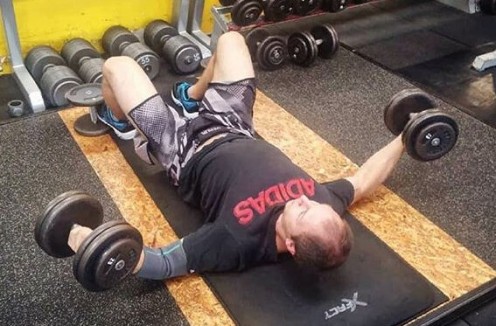
The elbows should not go lower than the parallel plane created by the shoulders. Due to the nature of the movement, a person will need to use much lighter weights for flyes than for regular chest pressing.
Flyes can also be done with thumbs facing each other. One must be cautious when doing flyes; too much weight can injure a shoulder tendon. Flyes are best done as the last set of the chest workout or as the second set of a superset, in which the first set is a bench press or dumbbell press.
If one wishes to do a dumbbell-only chest workout, the exercises described here are the ideal ones to perform.








